Army vet seeks to save Afghan commando stuck in Turkey, living in fear of Taliban

After 10 years apart, retired Green Beret John Paluska embraces his Afghan Special Forces colleague, Habib. Paluska spent the past two years navigating a path to permanent safety for the man who battled the Taliban by his side. (Medyafotoarsivi Medyamedia/MEGA for Fox News Digital)
FIRST ON FOX: The U.S. withdrawal from Afghanistan in August 2021 marked the start of retired Green Beret John Paluska's fight to keep his Afghan brother in arms, Habib, from facing a gruesome death at the hands of the Taliban. After Habib found temporary reprieve by getting himself to Turkey, Paluska flew to Istanbul to find his friend a pathway to safety in the U.S. Unfortunately, he found that Habib’s journey to freedom is far from over.
Before playing a role in the Global War on Terror’s devastating aftermath, Paluska was involved in many of its earlier developments. Six days into his freshman year at Fordham University in September 2001, Paluska jumped aboard a New York City subway train to reach the smoking rubble of the Twin Towers to volunteer with the rescue and recovery efforts.
That October, he began the Army enlistment process. On the 13th day of Paluska’s first combat deployment, an IED explosion left 160 pieces of shrapnel embedded in his body. His recovery lasted nine months, but the proliferation of shrapnel – and lingering effects of inhaling the putrid smoke at Ground Zero – would eventually force Paluska to medically retire in 2017. During the interim, he earned his commission and joined the Green Berets.
Paluska met Habib while the men were together at a forward operating base in eastern Afghanistan’s Ghazni province in 2013. Habib was an intelligence sergeant in an elite Afghan National Army Special Operations Command (ANASOC) unit. Because of his strong English, Habib developed friendships with Paluska and other Green Berets.
The Green Berets’ ANASOC counterparts were vital in conducting joint operations, building rapport with leaders, and establishing which civilians had ill intent. "We relied solely on Afghan partners for our safety… to the point where they would say ‘Americans, stay back, this is too dangerous,’" Paluska explained. Habib and his Afghan teammates routinely placed themselves between Americans and enemy fighters, taking bullets meant for Americans on "a few occasions," Paluska said.
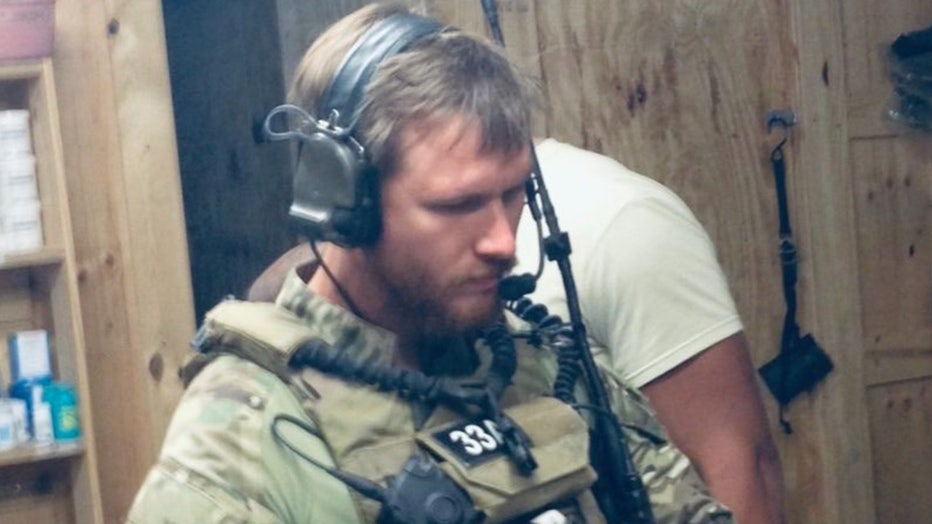
Paluska prepares for a joint operation between Green Berets and ANASOC forces during his deployment to Ghazni province in 2013. (Courtesy of John Paluska)
After Paluska left Ghazni, Habib and his team continued fighting. War depleted their numbers drastically. By the time of the U.S. withdrawal, Paluska estimated that "nearly half the Afghan team that I served with had died."

Paluska arrived in Istanbul with hopes to find Habib a path to freedom. With no path forthcoming, he wanted to boost Habib’s morale after his friend spent two years living in hiding and making dangerous escape attempts to evade the Taliban. (Medyafotoarsivi Medyamedia/MEGA for Fox News Digital)
In the televised chaos of the Taliban’s rapid takeover, Paluska said he "thought of one person, and that was Habib. I knew that I had to go and save his life." He reached out to Habib, and began moving him closer to known evacuation zones. Unfortunately, Habib was one of hundreds of thousands left behind by the initial U.S. noncombatant evacuation operation. When Paluska recognized there would be no U.S. government effort to continue evacuations, he said it "crushed me, it crushed my teammates, [and it] crushed so many of the military veterans who have served alongside some of the bravest men and women across Afghanistan."
Habib’s life changed overnight. He could no longer work or casually leave his home. Despite publicly declaring amnesty for their enemies, the Taliban began a quiet yet brutal reprisal campaign. Paluska has seen Habib’s name on Taliban kill lists identifying former Afghan government and military targets.
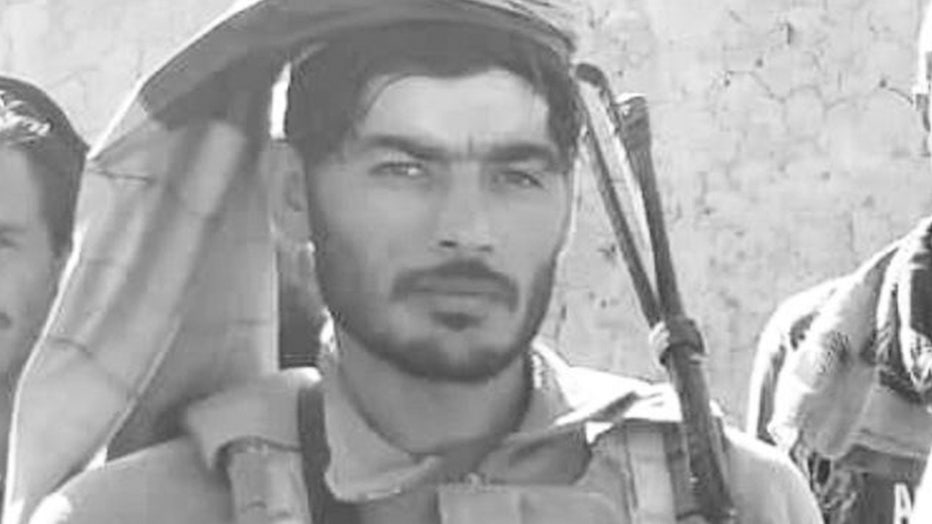
Habib pictured in this undated photograph. Habib was an intelligence sergeant in an elite Afghan National Army Special Operations Command (ANASOC) unit. (Courtesy of John Paluska)
Paluska remains concerned that Habib’s biometric data may reside on systems that Habib has seen the Taliban utilizing at checkpoints outside of cities. A Defense Department spokesperson told Fox News Digital that all U.S. biometric devices utilized in Afghanistan have been accounted for, and that the Taliban cannot access U.S. databases. The spokesperson stated it was likely the devices the Taliban found were "procured for Afghan forces to use with their own biometric databases," and further explained that the department "took measures to limit access to Afghan automated systems in July and August 2021."
OUT OF AFRICA: VET GROUPS COME TO RESCUE OF AFGHANS ON TALIBAN KILL LIST

During 12 years of service to his homeland, Habib survived two IED explosions and was shot multiple times, including intercepting two shots intended for Paluska. Habib’s service in the Special Forces left him with metal plates in his head, and scarri (Medyafotoarsivi Medyamedia/MEGA for Fox News Digital)
Because of security concerns, Paluska has provided food, necessities and money for passports and other documents for Habib’s family since August 2021. The pressure has "just been a lot," Paluska said, explaining how simple setbacks become complex in Afghanistan. For instance, when Habib’s wife developed a severe infection, Paluska called a doctor in Iowa to diagnose her over the phone. He then sent a courier to Pakistan for the antibiotics she needed to recover.
By May 2022, frustrated by living under constant risk, Habib attempted to flee to Turkey. He was arrested, detained by Turkish border police, and turned over to Iranian forces. While his friend was being imprisoned, beaten and starved for two weeks, Paluska said he "thought Habib was dead."
It took Habib around eight months to recuperate from his ordeal and prepare for another run for safety. After Turkish forces shot and killed two members of his group of 25, Habib fled for home. He spent two more months preparing to make his next journey, using weather and intelligence about ground patrols’ locations to evade capture. Paluska was relieved to hear that Habib had arrived in Istanbul in May.

While fighting Taliban forces for control of Afghanistan in the final month before the August 2021 U.S. withdrawal, Habib was shot in the leg. His wounds now impact Habib’s ability to walk. (Medyafotoarsivi Medyamedia/MEGA for Fox News Digital)
As an illegal refugee, Habib’s life in Turkey has been difficult. He told Fox News Digital that he "tried to get a Turkish visa, but… they want much money." Habib works in a manufacturing plant seven days a week for 12-hour shifts. He is living in a CONEX structure with no ventilation. He avoids going out in public for fear of being discovered, and subjected to further ill-treatment by Turkish or Iranian forces, whose abuse of Afghans has been documented by Amnesty International. Allegations of continued harm have been displayed in recent social media videos. Habib especially fears being forcibly delivered back to Afghanistan. The "Taliban try to find [former military personnel.]," Habib said. "If they get us alone, they kill us."
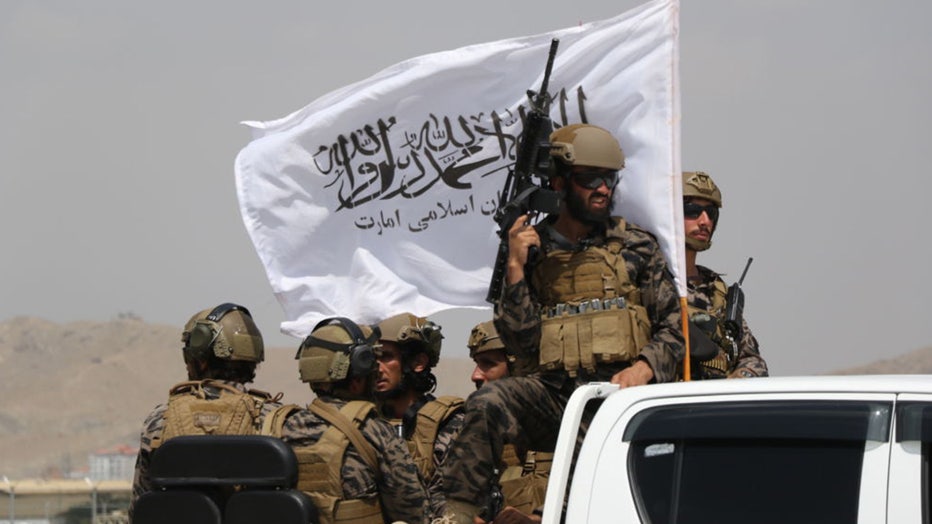
FILE - Taliban take control of Hamid Karzai International Airport after the completion of the U.S. withdrawal from Afghanistan, in Kabul, Afghanistan on August 31, 2021. (Wali Sabawoon/Anadolu Agency via Getty Images)
Paluska arrived in Istanbul in mid-July with a plan to find his friend legal protection through the U.S. Embassy. With generous donations from a nonprofit organization, the Special Operations Fund, Paluska helped Habib buy new clothes, supplies and medicines. They also purchased a cellphone, which Habib immediately used to call his wife and four children.
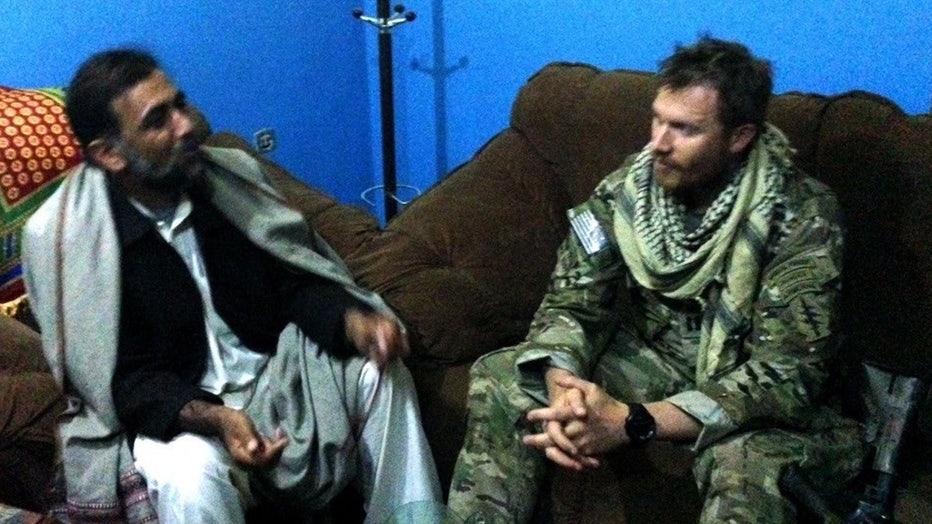
Paluska meets with the local Afghan government district governor during his deployment to Ghazni province in 2013. (Courtesy of John Paluska)
US ABANDONED $7B IN MILITARY EQUIPMENT IN AFGHANISTAN AHEAD OF TALIBAN TAKEOVER
During his visit, Paluska witnessed the physical toll that 12 years of service has taken on Habib. In addition to scarring from gunshot wounds and IED attacks, Paluska noticed that Habib avoided touching his head because of discomfort from the steel plates placed in his skull after being shot beneath his eye.
When Paluska and Habib arrived at the U.S. Embassy seeking information about a legal pathway for Habib to achieve safety, their hopes for resolution were dashed. While empathetic about Habib’s situation, embassy staff confirmed that there is no simple path to afford him protection in the U.S. or Turkey.

Paluska crowd-sourced donations to help outfit Habib with much-needed clothing and shoes. While in Istanbul, the friends also bought medicines, a backpack and a cellphone to help Habib keep in touch with his wife and four children while he awaits a p (Medyafotoarsivi Medyamedia/MEGA for Fox News Digital)
Prior to his arrival in Istanbul, Paluska believed Habib was eligible for a special immigrant visa, which grants lawful permanent resident status to interpreters and contractors with qualifying employment on behalf of the U.S. government. Afghan military personnel who worked alongside U.S. forces do not currently have SIV eligibility.
Advocacy groups call this an injustice. The International Refugee Assistance Project’s policy director Sunil Varghese told Fox News Digital, "anyone who put their life on the line to support the U.S. mission in Afghanistan deserves to have SIV in hand yesterday." Varghese touted the Afghan Adjustment Act, reintroduced by the House and Senate on July 14, as a path forward for individuals like Habib.
Late last month the Senate failed to include the act in its version of the National Defense Authorization Act, No One Left Behind’s director of advocacy Andrew Sullivan told Fox News Digital. For now, he says "neither the House nor Senate have included any SIV provisions in their version of the bill."

Habib lives in a poorly ventilated CONEX box with a number of other Afghans, all of whom work daily 12-hour shifts in a manufacturing environment, where they hope to stay off authorities’ radar. (Medyafotoarsivi Medyamedia/MEGA for Fox News Digital)
If the Afghan Adjustment Act were passed, it would not remove all barriers to SIV applicants’ safety. Varghese and Sullivan are concerned that delays in SIV processing continue to impact applicants. Sullivan cited the State Department Inspector General, saying that over 152,000 SIV applicants still reside in Afghanistan. This number does not include applicants who escaped to third countries.
With an influx of new candidates, Habib would have a lengthy wait before he can be processed. Sullivan also noted that only 37% of applicants achieve Chief of Mission approval – the first step of the SIV process. Whether approved or not, applicants in Afghanistan remain at risk. No One Left Behind "has received reports of over 200 deaths of SIV applicants and other wartime allies since the U.S. withdrawal," Sullivan confirmed. Though not independently verifiable, these claims describe "brutal extrajudicial reprisal killings."
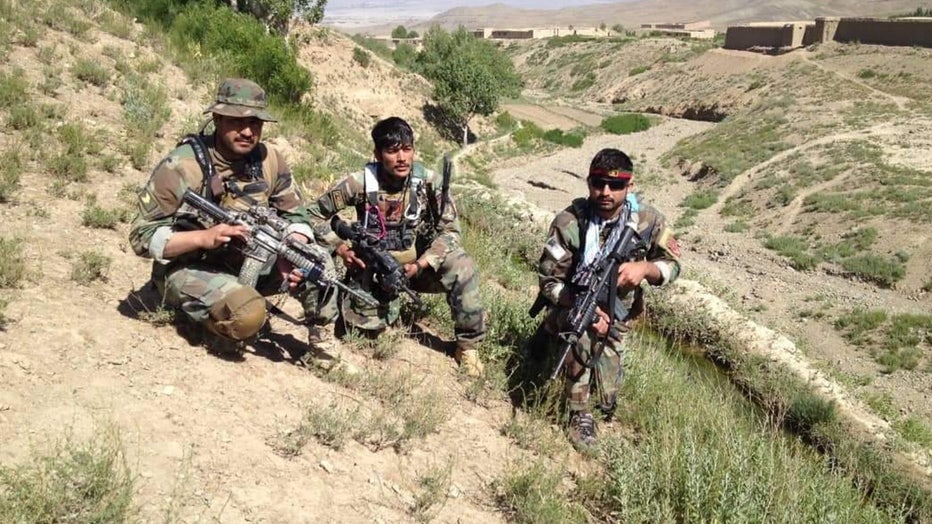
Habib, middle, with colleagues from the ANASOC unit in Afghanistan. (Courtesy of John Paluska)
A State Department spokesperson confirmed for Fox News Digital that Afghan military personnel do not meet SIV requirements, but stated they "may be eligible for a referral to the U.S. Refugee Admissions Program (USRAP)."
The USRAP has provided little respite for applicants. Mariam Atash, an immigration attorney who represents multiple USRAP applicants, told Fox News Digital the program "exists on paper, but it is not receiving the necessary attention or support… to function properly."

Paluska told Fox News Digital he will not let his friend be forgotten. "I shed my blood [with Habib,] this guy saved my life... If this guy gets captured and goes back, it's going to be a bad day for me." (Medyafotoarsivi Medyamedia/MEGA for Fox News Digital)
The State Department’s spokesperson stated that 26,932 principal applicants have been accepted to the USRAP. The State Department did not respond to questions about how many of these applicants remain unprocessed.
Publicly available data shows that 6,728 Afghan refugees have arrived through USRAP since fiscal year 2021. If USRAP principal applicants, like Afghan SIV principal applicants, apply with an average of four and a half family members, then around 1,495 of these refugees are principal applicants. This leaves up to 25,437 – more than 94% of accepted applicants – unprocessed nearly two years after the U.S. withdrawal.
CLICK HERE TO GET THE FOX NEWS APP
Rep. Mariannette Miller-Meeks, R-Iowa, has long attempted to support Paluska’s efforts to help Habib. She told Fox News Digital that the stories like Paluska’s compelled her to introduce the Afghan Adjustment Act. "Like many current and former members of Congress, I am disappointed and angry with the… failures during the Afghanistan withdrawal. Capt. Paluska understands our frustration and feels it personally," Miller-Meeks said. "I commend him for his efforts to uphold his duties and responsibilities."
Despite the difficult road ahead, Paluska still refuses to give up the fight. "I didn’t think I’d be here two years later," he admitted. "But Habib and others like him who have served and dedicated their lives to not only their country, but to American forces… they deserve to come home to a place where they can have freedom."

